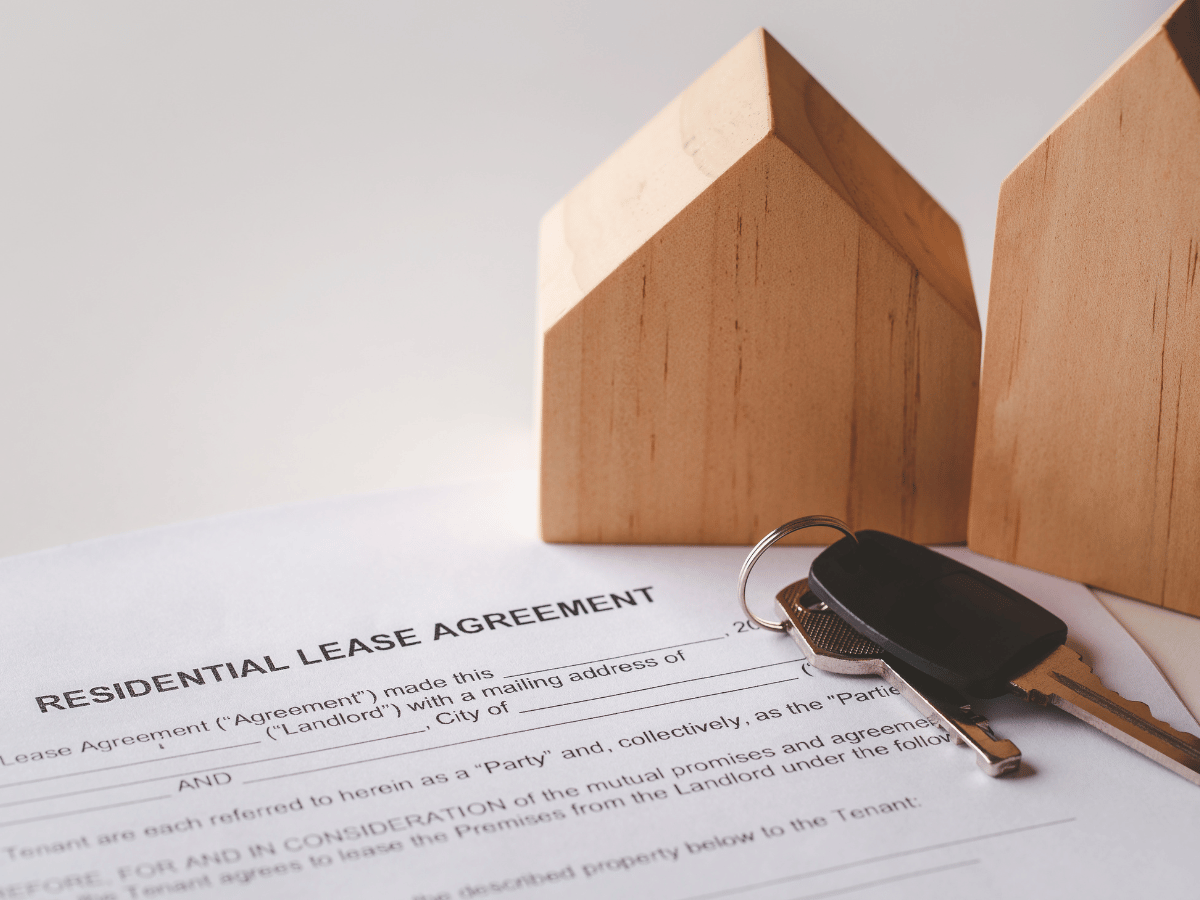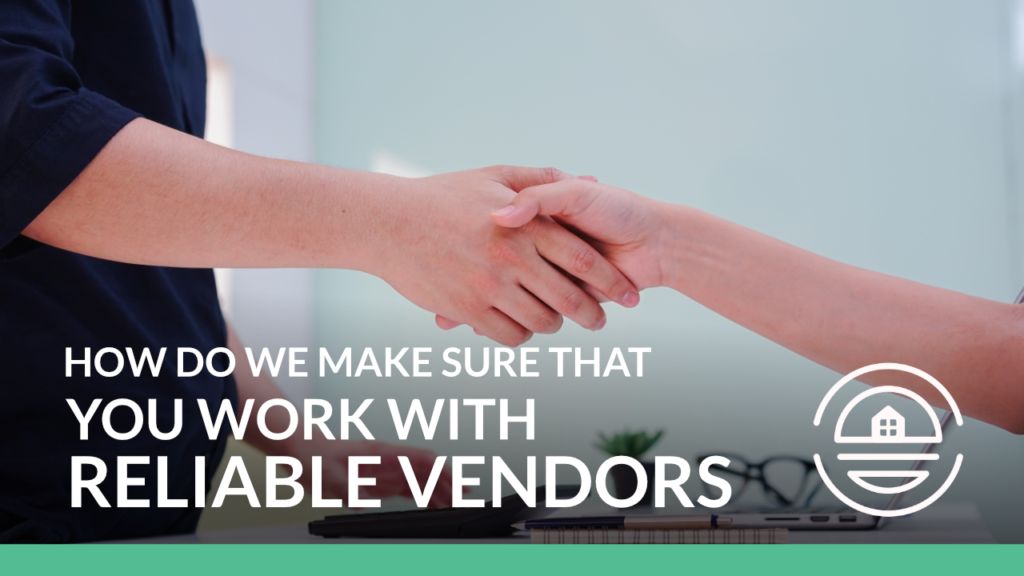From Application to Move-In: Making the Tenant Onboarding Process Easy
Reading Time: 5 minutesFirst impressions matter, and that’s especially true when it comes to welcoming new tenants. A smooth onboarding process sets the tone for a positive landlord-tenant relationship and fosters a sense of community within your rental property. By streamlining the steps from application to move-in, you can benefit from increased tenant satisfaction, reduced vacancies, and a…

First impressions matter, and that’s especially true when it comes to welcoming new tenants. A smooth onboarding process sets the tone for a positive landlord-tenant relationship and fosters a sense of community within your rental property. By streamlining the steps from application to move-in, you can benefit from increased tenant satisfaction, reduced vacancies, and a more efficient rental operation.
Table of Contents
Streamlining the Application Process

Making a great first impression is crucial, and the application process is your chance to shine. Here’s how to create a smooth and efficient experience for potential tenants from the very beginning.
Offer Multiple Submission Options: Cater to different applicant preferences by providing both online and paper application options. An online application form on your website or through a property management platform allows for quicker processing and easier data collection. For those who prefer a traditional method, offer printable application forms downloadable from your website or readily available at leasing offices.
Clearly Outline Requirements Upfront: Don’t waste anyone’s time. Clearly list all required documents and information on your application form and website. This might include proof of income (paystubs, tax returns), bank statements, references, and a copy of a valid ID. By being upfront about requirements, you’ll attract qualified applicants and avoid delays in processing applications.
Utilize Efficient Screening Tools: Screening tools are your allies in finding responsible tenants. Invest in reputable services that verify applicant information such as employment history, credit score, and rental history. These tools can also streamline reference checks by electronically contacting previous landlords and employers.
Selection and Communication
Open communication is key to building a positive relationship with your tenants, and that starts with the application process. Here’s how to ensure everyone is informed and on the same page.
Effectively Communicate Application Status: Keep all applicants informed, regardless of their selection status. An automated email system can notify applicants when their application is received, under review, or unfortunately, not chosen. Consider offering brief explanations for denied applications, while still complying with fair housing regulations.
Clearly Explain Lease Terms and Answer Questions: Transparency is key to building trust. Schedule a call or meeting with the chosen tenant to discuss the lease agreement in detail. Explain all terms and conditions in a clear and concise manner. Encourage the tenant to ask questions and address any concerns they may have before signing the lease. This open communication will set the stage for a positive landlord-tenant relationship.
Signing the Lease Agreement

The lease agreement is the foundation of your relationship with your tenant. By ensuring a secure and streamlined signing process, you’re setting the stage for a smooth tenancy.
Embrace Electronic Lease Signing: Gone are the days of printing, signing, scanning, and emailing bulky lease agreements. Offer convenient electronic lease signing options through reputable e-signature platforms. These platforms ensure a secure and legally binding signing process for both you and the tenant. The tenant can easily review, sign, and store the lease electronically, eliminating the need for physical copies.
Guarantee Understanding and Agreement: While electronic signing simplifies the process, prioritize ensuring both parties fully understand the lease terms. Offer the lease agreement well in advance of the signing date and provide clear explanations of any complex clauses. Encourage the tenant to ask questions and address any concerns before signing. You can even offer a recorded video explanation of the lease terms for added clarity.
Pre-Move-In Tasks
The move-in process can be stressful for tenants. By taking these steps beforehand, you can ensure a smooth transition and minimize any last-minute hiccups.
Secure Online Payments: Modern property management software allows for the secure collection of security deposits and any applicable fees directly through an online portal. This eliminates the need for cash or check transactions, providing a safe and convenient experience for the tenant. Additionally, it streamlines record-keeping and simplifies reconciliation for you.
Schedule a Collaborative Move-In Inspection: Schedule a joint move-in inspection with the tenant before they take possession of the property. This allows you to document the initial condition of the unit together, including noting any pre-existing wear and tear. Use a detailed checklist to ensure a thorough inspection and have the tenant sign a copy of the completed checklist for your records.
Provide Clear and Accessible Move-In Instructions: Don’t leave your new tenant guessing! Provide clear and comprehensive instructions regarding move-in procedures. This could include information on designated parking areas, access codes for building entry and common areas (if applicable), and preferred move-in timeframes (if restrictions exist). Consider offering these instructions in a downloadable document or welcome email for easy reference.
Move-In Day

Move-in day is the culmination of your onboarding process and the official start of your tenant’s residency. Here’s how to ensure a smooth handover and set the tone for a positive relationship.
- Conduct a Collaborative Move-In Inspection: Schedule a joint move-in inspection with the tenant before they take possession of the property. Walk through the unit together, meticulously documenting the initial condition. Use a detailed checklist that includes everything from the functionality of appliances to the condition of walls and flooring. Have the tenant sign a copy of the completed checklist for your records and theirs. This collaborative approach establishes a baseline for the property’s condition and protects both parties in the long run.
- Hand Over Keys and Access Codes: Provide the tenant with all necessary keys and access codes. Label each key clearly to avoid confusion, and consider offering spare copies for a small fee. If the property has secure entry systems or common areas with access codes, ensure the tenant receives the proper credentials.
- Orient the Tenant with Important Information: Take a few minutes to go over important maintenance procedures and tenant responsibilities. Explain how to report maintenance requests (online portal, phone call, etc.), what constitutes normal wear and tear versus tenant-caused damage, and proper waste disposal procedures. Provide clear contact information for yourself or your property management team in case of emergencies or questions.
Welcome and Ongoing Communication
A positive onboarding experience sets the stage for a long-lasting and mutually beneficial tenancy. Here’s how to cultivate open communication and foster a sense of community.
- Send a Warm Welcome Email: A personalized welcome email goes a long way. Introduce yourself or your property management team, and express your excitement about having the tenant join the community. Include helpful resources such as a tenant handbook, maintenance request instructions, and important contact information. You can also include links to community resources or amenities guides (if applicable).
- Be Readily Available and Responsive: Building trust requires open communication. Make yourself readily available to answer questions and address any concerns your tenants may have. Respond to emails and phone calls promptly, and be approachable for in-person interactions. By demonstrating responsiveness, you’ll show your tenants that you value their well-being and are invested in maintaining a positive living environment.
Conclusion
By investing time and effort into creating a smooth onboarding process, you’ll reap the benefits for years to come. Happy tenants are more likely to stay longer, take good care of the property, and refer others to your rentals. Remember, a little effort upfront can lead to a long-term, mutually beneficial relationship with your tenants.
Tired of the application-to-move-in headache? Green Ocean Property Management streamlines the process, ensuring a positive experience for both you and your tenants.
Let us help you create a foundation for a successful landlord-tenant relationship! Contact Green Ocean Property Management today.
Why Investors Need a Public Insurance Adjuster?
Reading Time: 4 minutes Insurance losses will change people’s lives, and whether it means floods or fires, or something that is going to kick a tenant out of the properties, we make sure that we handle the process from start to finish and as quickly and as efficiently as possible. Why hire a public adjuster? Every…
Elevate Your Property’s Appeal With a Well-Maintained Parking Lot
Reading Time: 2 minutesYour parking lot is more than just a space for your vehicles; it’s a crucial part of your property’s first impression. If you are staring at a less-than-ideal parking area filled with gravel and holes, worry not. At Green Ocean Property Management, we understand the importance of a well-maintained parking lot. This article will tackle…
How Do We Make Sure that You Work with Reliable Vendors
Reading Time: 2 minutes One of the most valuable things that we have access to as a property management company is reliable vendors. Having reliable vendors did not happen overnight. We, just like every other landlord had to go through tons and tons of different vendors that gave us issues. Vendors not showing up on time, trying…








